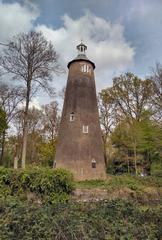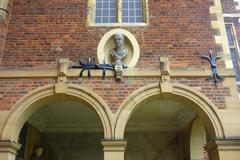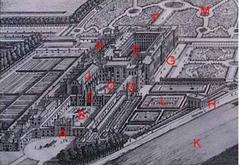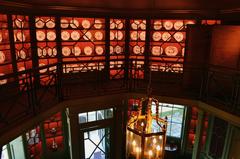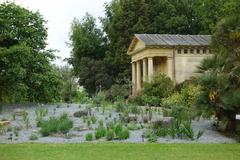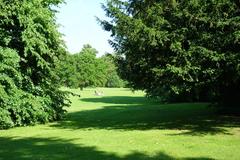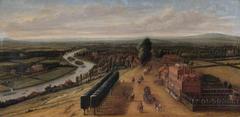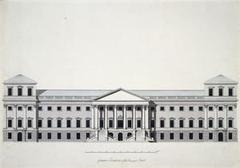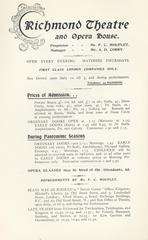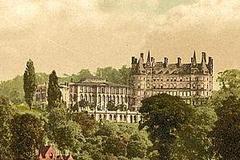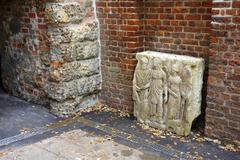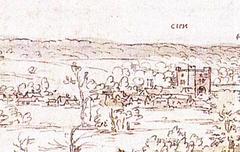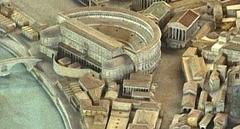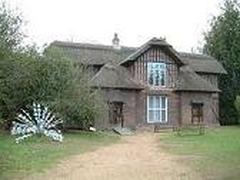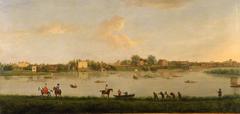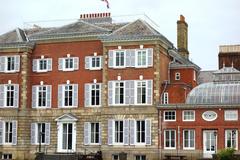Visiting the Three Obelisks on the River Thames, Richmond, United Kingdom – Comprehensive Guide
Date: 14/06/2025
Introduction
Richmond, set along the serene banks of the River Thames in the United Kingdom, is distinguished by a trio of 18th-century obelisks known as the Three Obelisks. Erected in 1778 within Old Deer Park, these monuments are significant not only for their elegant neoclassical architecture but also for their scientific importance as astronomical markers aligned with the historic King’s Observatory. Commissioned under King George III, the obelisks were vital for celestial observations and reflect the Enlightenment era’s ideals of knowledge, rationality, and harmony between human achievement and the natural landscape.
The obelisks are strategically placed along the Arcadian Meridian—a symbolic north-south axis connecting several significant landmarks and weaving a rich historical narrative through the region. Today, they are accessible via the Thames Path, offering visitors a unique blend of historical, scientific, and scenic experiences amid Richmond’s vibrant community and parkland (Andrew Gough; King’s Observatory; Historic England; Visit Richmond; Secret LDN).
This guide explores the obelisks’ architectural and cultural significance, provides detailed visitor information, highlights nearby attractions, and offers practical tips to make the most of your visit to this remarkable Richmond historical site.
Contents
- Introduction
- Architectural Design and Placement
- Observatory Integration
- Materiality and Form
- Landscape Context
- Symbolic and Cultural Significance
- Arcadian Meridian
- Royal and Enlightenment Connections
- The Obelisk as a Symbol
- Visitor Information
- Hours, Tickets, and Accessibility
- Getting There
- Guided Tours and Events
- Nearby Attractions
- Visitor FAQs
- Visual Experience and Practical Tips
- Recommendations for a Memorable Visit
- References
Architectural Design and Placement
Observatory and Obelisk Ensemble
The Three Obelisks are intrinsically linked to the King’s Observatory, designed by Sir William Chambers for King George III in the 1760s. The observatory was a leading center for astronomical and meteorological research. The obelisks’ placement was meticulously planned: two are positioned south of the observatory near the Thames, used to calibrate transit instruments through the observatory’s east and west windows; the third, to the north, marks the true meridian (Andrew Gough).
Materiality and Form
Reflecting neoclassical tastes, the obelisks are made of Portland stone, featuring slender, tapering shafts and pointed tops reminiscent of ancient Egyptian prototypes. Their unadorned surfaces and geometric precision echo Enlightenment values and the English landscape garden tradition, where sightlines and architectural follies played key roles in design.
Landscape Integration
The obelisks are situated along the Arcadian Meridian, a symbolic axis running through Richmond’s Arcadian landscape and connecting historic sites like Hampton Court Palace, Kingston-upon-Thames, Kew, Syon House, and Brentford. This deliberate alignment integrates the obelisks into a wider narrative of history, art, and science, enhancing their significance as both scientific instruments and landscape features (Andrew Gough).
Symbolic and Cultural Significance
The Arcadian Meridian
Established by King George III, the Arcadian Meridian represents a vision of Richmond as a cultivated paradise and a center of English heritage. The obelisks mark this axis, linking royal residences, religious sites, and historic events, and embedding Richmond’s landscape with layers of symbolic meaning.
Enlightenment Ideals and Royal Patronage
The obelisks embody Enlightenment principles: the pursuit of knowledge, rational measurement, and harmony between nature and human achievement. King George III’s patronage of science is evident in the scientific function of the obelisks and their prominent placement in the landscape (Andrew Gough).
The Obelisk as a Symbol
Traditionally, obelisks symbolize commemoration, power, and a connection between earth and sky. In Richmond, they are both practical tools for astronomy and symbolic beacons of the region’s layered history, inviting contemplation and exploration.
Visitor Information
Hours and Tickets
- Accessibility: The obelisks are located outdoors in Old Deer Park and may be visited at any time, year-round, free of charge.
- King’s Observatory: The observatory is privately owned and not generally open to the public, though occasional special events or guided tours may be available (King’s Observatory).
Getting There
- By Train: Richmond Station is a 15-minute walk from Old Deer Park, served by National Rail, London Underground (District Line), and London Overground.
- By Riverboat: Services operate between Westminster and Richmond, providing a scenic approach along the Thames (Secret LDN).
- By Car: Limited parking is available in Old Deer Park and Richmond town centre; public transport is recommended.
- On Foot/Bicycle: The Thames Path provides direct access and is suitable for walking and cycling (theflamingohiker.com).
Accessibility
- The site features flat, paved paths suitable for wheelchairs and strollers, though some grassy areas may become muddy after rain.
- Public toilets and other amenities are available at park entrances and in Richmond town centre.
Guided Tours and Events
- While there are no regular guided tours solely for the obelisks, local history walks and Thames Path tours often include them.
- Richmond hosts festivals and events throughout the year, some featuring heritage themes that highlight the obelisks (Visit Richmond).
Nearby Attractions
- Kew Gardens: A world-renowned botanical garden and UNESCO World Heritage Site.
- Richmond Park: London’s largest Royal Park, home to free-roaming deer and scenic trails.
- Syon House: An historic stately home across the river.
- Richmond Riverside and Town Centre: Offers riverside pubs, restaurants, and shopping.
- Museum of Richmond: Local museum offering exhibitions on Richmond’s history (Museum of Richmond).
Visual Experience and Practical Tips
- Photography: Early mornings and late afternoons offer the best lighting for photos. The obelisks’ alignment and the park’s open vistas create striking compositions.
- Best Times to Visit: Spring and summer provide lush scenery; weekdays are quieter than weekends.
- Safety: Visit during daylight hours for optimal visibility and safety. Some riverside areas can be muddy or slippery after rain.
- Facilities: Benches and grassy spots are available for picnics; cafés and pubs are nearby.
- Etiquette: Be mindful of cyclists and joggers on the Thames Path, and supervise children near the water’s edge.
Recommendations for a Memorable Visit
- Combine your visit to the Three Obelisks with other Richmond highlights such as Kew Gardens or Richmond Park for a full day of exploration.
- Consider joining a local guided walk for deeper historical insight.
- Pack a camera or sketchbook to document the unique interplay of history, architecture, and natural beauty.
- Check local event calendars for festivals or community activities that may enhance your experience (Richmond events calendar).
Frequently Asked Questions (FAQ)
Q: Are the Three Obelisks free to visit?
A: Yes, they are in public parkland and can be visited year-round at no charge.
Q: Is the King’s Observatory open to the public?
A: Generally, no—though occasional events may allow limited access (King’s Observatory).
Q: Are the obelisks wheelchair accessible?
A: Most paths are accessible, though some grassy areas may be uneven.
Q: Are guided tours available?
A: Local walking tours often include the obelisks as part of wider heritage trails.
Q: When is the best time to visit?
A: Spring and summer, or early morning and late afternoon for the best light and tranquil atmosphere.
Summary and Visitor Recommendations
The Three Obelisks on the Richmond riverbank are enduring symbols of 18th-century scientific innovation, royal patronage, and landscape artistry. Their precise astronomical alignments and integration into the Arcadian Meridian reflect a fascinating blend of Enlightenment ideals and Georgian aesthetics. Today, these monuments offer visitors a tranquil and accessible setting for history, leisure, and reflection.
Enrich your experience by visiting nearby sites such as Kew Gardens, Richmond Park, and Syon House, and consider participating in local events or guided walks for further insights. For up-to-date information and curated tours, download the Audiala app and explore Richmond’s historical tapestry in depth (King’s Observatory; Andrew Gough; Visit Richmond).
References and External Links
- Richmond Obelisks: Architectural Marvels and Visiting Guide to Richmond’s Historical Sites, 2025, Andrew Gough
- Visiting the Three Obelisks in Richmond: Location, Access, and Tips, 2025, King’s Observatory and local travel guides
- King’s Observatory
- The Flamingo Hiker: Thames Path Richmond-Kew
- Visit Richmond: Things to Do
- Secret LDN: Things to Do in Richmond
- Museum of Richmond
- Richmond events calendar
- Richmond Council News
For more information and up-to-date guides, download the Audiala app and follow us on social media for the latest updates on Richmond’s historical sites and events.
